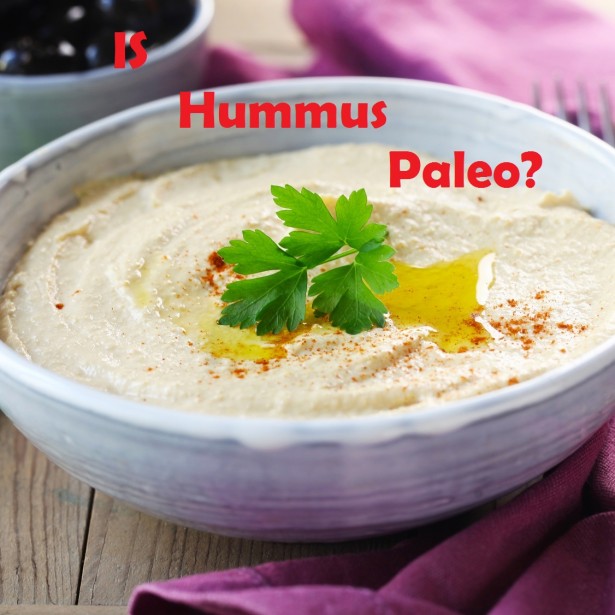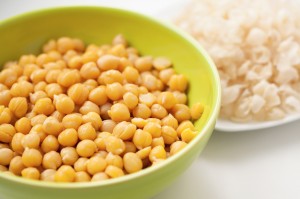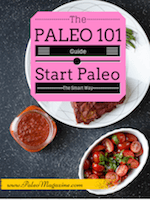Is Hummus Paleo?

I never had hummus until I got to college.
But I quickly learned to love it. (I was also drinking a lot of margaritas at the same time, which seemed to go very well together.)
Hummus is a popular Middle Eastern dip made from cooked, mashed garbanzo beans, tahini (a paste made from ground sesame seeds), lemon juice, salt, and garlic.
What You Need to Know About Hummus
Its first ingredient should be the big tip-off in whether or not hummus makes the Paleo cut.
 Garbanzo beans (aka chickpeas).Garbanzo beans are a legume, which are not technically Paleo.
Garbanzo beans (aka chickpeas).Garbanzo beans are a legume, which are not technically Paleo.
If you’ve read my article on legumes, then you know that I don’t think legumes are really that bad for us. They do contain a fair amount of nutrients, and for the most part, they’re not particularly toxic.
However, they don’t provide the same dense sources of nutrients that meats, seafoods, or vegetables do. Also, they contain a few gut irritants, often exacerbating problems, rather than causing them.
Beans and legumes can also pack quite a dose of carbohydrates, which may in themselves wreak havoc in keeping blood sugar regulated. This might be a problem for many folks trying to knock off the pounds, or who have other types of medical or metabolic conditions.
The short-chain types of sugars they contain are also not completely digested. These sugars are absorbed by the intestines, functioning as a food for the bacteria living there. The bacteria ferment the sugars and create just what you don’t want—bloating and gas—along with the potential to bloom into gut dysbiosis, an inflammatory digestive condition.
Ancient cultures found that when they rinsed, soaked or fermented legumes, it partially reduced some of their toxins. However the effectiveness of this practice in reducing toxicity can vary, although it’s often recommended today for those who still want to incorporate the food into their diet. Depending on a person’s own level of sensitivity, this method that may or may not be effective for everyone in diminishing undesirable effects.
What Do Other Paleo Experts Say?
Mark Sisson says: “It certainly isn’t Primal…but not all hummus is created equal. If you’re going to cheat, I implore you to use the good stuff. If you’re willing to make your own hummus, soak your own garbanzos, preserve your own lemons, etc., then hummus won’t be too bad. It’ll be free of BPA, low in phytic acid, full of healthy, Primal ingredients like olive oil, lemon juice, garlic, and tahini, and it will taste pretty darn good. Extra points for fermented hummus.”
Dallas and Melissa Hartwig say: “Hummus: No. . .Traditional hummus is made from garbanzo beans, which are a legume. However, there are some really yummy hummus-like dip recipes out there…”
Robb Wolf says: “If you peruse some of the gluten free websites you will notice folks who are still struggling with significant GI problems despite strict adherence to a gluten free diet. Now these poor souls embark on a gluten free lifestyle that includes rice flour, and loads of legume products. This is not helping the insulin resistance most of these folks have AND it is exposing them to other lectins which have significant GI problems as well.”
Is Hummus Paleo?
No.
However, some individuals can tolerate small amounts of legumes if well-soaked or fermented. If you’re such a person, then you might be able to find a place for hummus as an occasional treat or “cheat” when the hummus is homemade. If you want to stay clean and still get your hummus on, look to alternatives to the legume, such as macadamia nuts, cauliflower or cashews.
Images: Copyright (c) Barbara Pheby from Fotolia and Jessmine from Fotolia

